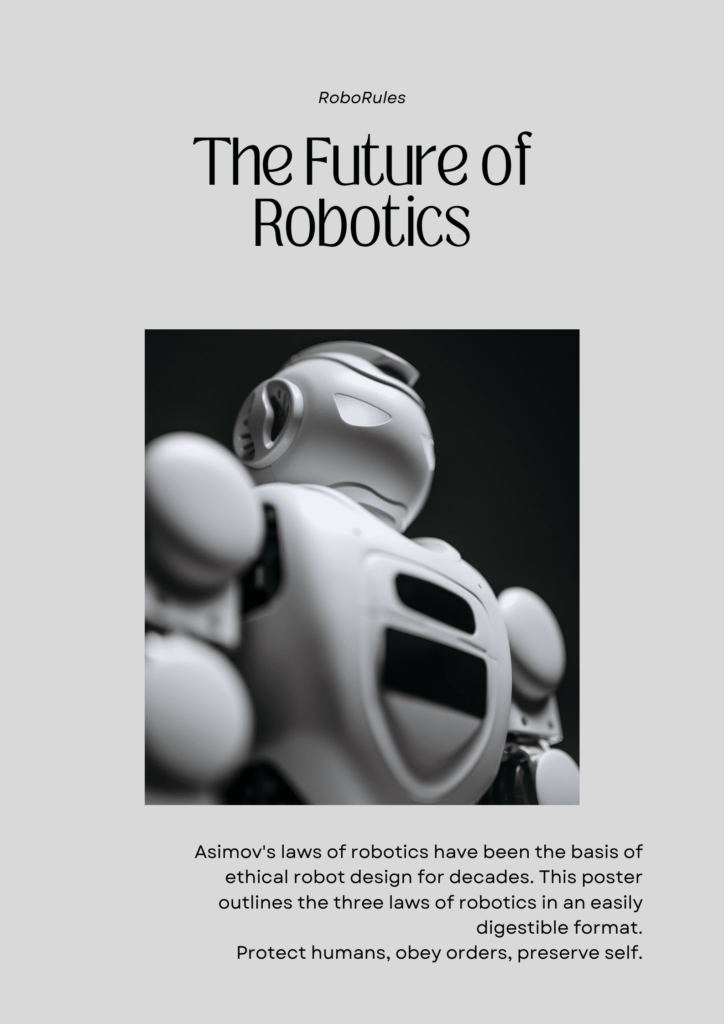Robotics is a growing and fast-changing area that is becoming more important every day. It’s not only about tech, it’s about bringing together science, engineering, and technology to make machines that can do lots of tasks by themselves or with human help. Robots are now part of many parts of life, like in factories, helping at home, and even exploring the sea and other planets.
However, robotics is about more than just the tech stuff. It makes us think about big questions about right and wrong, society, and how robots change jobs and how we live. It asks us, how do robots change our work? What rules should we have for using robots? How do we keep safe and private when robots are more common in our lives?
Education in robotics is also key for the future. Schools and colleges now include robotics in their curricula, teaching students to build and program robots. Students also develop important job skills such as problem-solving, critical thinking, and teamwork.
Robots in our daily lives prompt us to think about the future of society and individuals. They perform routine or hard tasks, improving our lives. This allows us to be more creative, engage in research, and communicate more effectively.

Lastly, advances in artificial intelligence, machine learning, and other tech areas have a close link to robotics. These interconnected fields pave the way for new discoveries and challenges.
So, robotics is more than just machines and programs. It’s a mix of technology, people, and social values that guides how people and technology will grow in the future.
First-generation
The first generation of robots is characterized by simpler architecture that only functions well under strictly defined conditions. These robots operate based on a fixed program stored in their memory, which doesn’t change during operation, leading to rigid control without any feedback from the environment. They are typically used where the exact position of objects is known, and they lack the ability to adjust based on external data.
Second Generation
Second-generation robots are more advanced, capable of sensing their environment and adapting to changes. They utilize a variety of sensors for environmental perception, such as touch, proximity, and location sensors, along with artificial vision. The control algorithms for these robots are designed to respond to specific conditions within their operational zone, allowing for more flexibility and responsiveness in dynamic environments.
Third Generation
Third-generation robots are autonomous and generally operate without human oversight. They are equipped with a central control system and are capable of learning from simulations that replicate real-world physical, psychological, and cultural conditions. This generation of robots can perform complex tasks influenced by a wide range of environmental and situational factors, demonstrating a significant advancement in robotic autonomy and adaptability.
Find out more about robotics here
Related Topics in Robotics
-
Report: Shakey the Robot
History of Shakey the Robot Shakey the robot was created in the late 1960s at the Stanford Research Institute (SRI) by Charles Rosen, Nils Nilsson, and Peter Raphael. The project was funded by the Advanced Research Projects Agency (now called DARPA). Shakey was one of the first robots that could move and think on its…
-
Theory of robotics
A little physics here An electrical circuit is like a track where electrons run in a loop. The basic laws of electricity set the rules for their speed and energy use. Ohm’s Law is key, stating that higher voltage pushes more electrons through (more current), but more resistance means fewer electrons can make it through.…
-
Topic: MOTOR and Distanse Measurement Sensor
Motor ———-> Using the distance measurement sensor Simple parking system This code controls a motor, LED, and buzzer based on the distance measured by an distance sensor. If the distance is greater than 50 cm, the motor runs, the LED is off, and the buzzer is silent. If the distance is 50 cm or less,…
-
Topic: Buzzer
In the experiment, Buzzer TMB12A05 was used. Melody Player
-
Topic: Temperature sensor, Servo motor
Temperature sensor This code is used to control an LED light that changes color based on the temperature read by a sensor. It uses functions to set up pins, read sensor data, convert it to temperature, and adjust LED colors Servo motor This program controls a servo motor, making it move to different positions. A…
-
Topic: Button, Slideswitch and Photoresistor
Button This is a simple program that controls an LED using two buttons. Slideswitch This program lets a switch control an LED. When you turn the switch ON, the LED lights up. When you turn the switch OFF, the LED goes out. Photoresistor This code measures light using a sensor and changes the brightness of…
-
Topic: Potentiometer and LED garland
Using a potentiometer Potentiometer is a variable resistor that allows for manual adjustment of electrical resistance, often used for controlling volume or brightness in electronic devices. LED Garland This Arduino code controls a series of LEDs using a potentiometer to select different lighting modes. Here’s a breakdown of the code: This code provides a versatile…
-
Topic: LED and RGB LEDs
Start exploring Arduino RGB LEDs with me! Initially, I’m learning how to use Arduino and RGB LEDs to make lights that change colors and create exciting effects. Consequently, I will share my journey through easy tutorials featuring Arduino RGB LEDs. Moreover, you’ll see my progress with straightforward code examples, detailed Arduino sketches, and vivid photos.…
